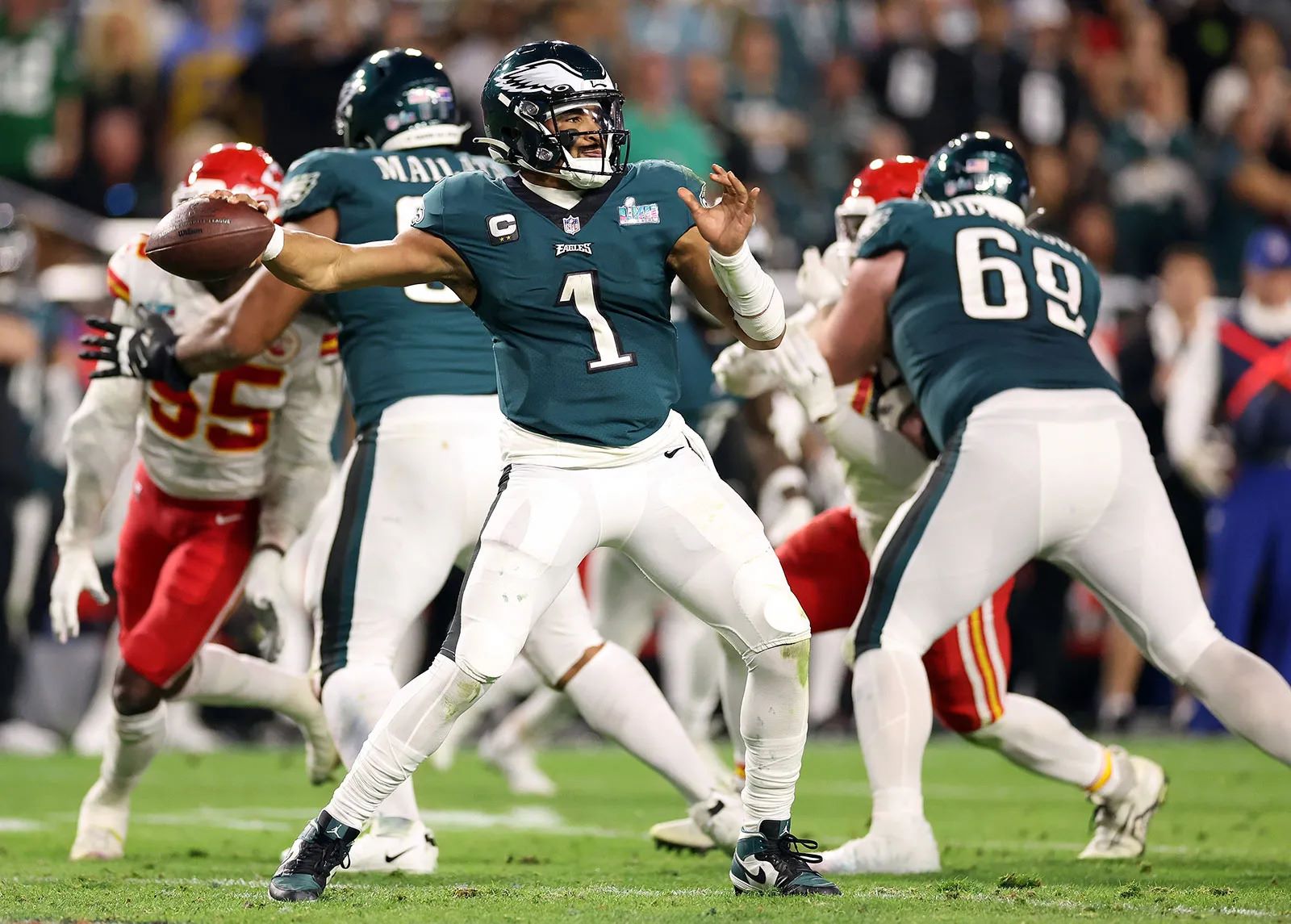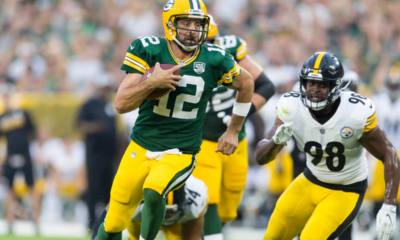
Pat Mahomes is chasing GOAT status. Why does Lamar Jackson flop in the playoffs? Would Josh Allen ever figure out the Chiefs? How come the 49ers players didn’t know the new overtime rules?
Like any other sport in the United States, the NFL evokes emotions and inspires drama. Few, however, combine controlled aggression with technical brilliance, as well as the NFL. The spectacle and debates we enjoy from this premium sporting entertainment are products of decades of evolution.
This article charts the evolution of the NFL from its inception until today. Read on to learn how the league developed into its financial and cultural success and how influencers contribute.
History of the NFL
The National Football League (NFL) is the main professional American football league in the United States. Founded in 1920, its original name was the American Professional Football Association (APFA) before a change to its current name in 1922.
In those early days, teams came together via mergers and alliances. As such, there was also no established schedule. Instead, teams arranged games among themselves in a relatively disorganized manner to what exists today. They existed in regional leagues. Some of these regional leagues merged to form the APFA.
The renaming and rebranding into the NFL was done with the ambition of receiving national recognition in mind. Following the rebranding in 1922, the league continued to expand. One such way was the creation of expansion teams into new markets. However, the most significant developmental milestone was the 1966 merger.
The NFL merged with its then-major rival, the American Football League (AFL). The merger brought teams, players, and fans under a single football league. It also led to the formation of the two-conference system that sees teams as part of the NFC or AFC. The merger also brought about divisional rankings that factor into playoff qualification.
Following the merger, the regular season featured 14 games. However, this was expanded to 16 games in 1978. The 1990s saw the addition of bye weeks to allow teams to rest during the regular season schedule and wildcard rounds to expand the playoffs. By 2002, the league realigned the divisions to accommodate more expansion. It also introduced a scheduling format that saw each team;
- Play six games against opponents in their division;
- Four games against teams from another division but within the same conference;
- Four games against teams from other divisions in the other conference;
- Based on performances in the previous season, two games against teams from other divisions in their conference.
2021 saw the league add an extra game to each team’s schedule, bringing the total to 17 per season. However, the schedule is not the only thing that has changed over the years.
The game duration has evolved from the early days of the league. In the beginning, there were fewer stoppages and breaks. The result was a shorter but fast-paced spectacle. Today’s game is much longer and slower thanks to the development of the following factors:
- Extensive television coverage and commercials;
- Rule changes;
- Scheduled stoppages;
- The incorporation of instant replay;
- Accurate adjustments to clock management;
- In-game analysis;
- Halftime shows.
There have been efforts to reduce commercials, shorten replay reviews, and prevent in-game delays.
In the spirit of consistency, there have been no major changes to the scoring rules since the start of the league. That’s excepting the introduction of the two-point conversion in 1994. The two-point conversion allows the team to attempt a two-point play after a touchdown instead of kicking for an extra point.
However, rule changes and improved offensive strategies have seen scoring trend higher. All things considered, the biggest change has been financial. The league had modest beginnings. Yet, things started to pick up in the 70s and 80s following the 1966 merger and expansions. Consider these contracts:
- Joe Namath signed with the Jets in 1965 for 427 thousand dollars.
- By 1991, Dan Marino signed a five-year contract worth $23 million with the Dolphins.
- 13 years later, Peyton Manning’s 7-year contract with the Colts was a reported $98 million.
- 43-year-old Tom Brady bagged a $50 million two-year contract with the Bucs in 2020.
- In the same year, Pat Mahomes signed a historic 10-year contract worth $45 million per year with the Chiefs.
- Today, at least eight players have higher average yearly salaries than Mahomes’ contract.
How Influencers on Social Media Have Helped Shape Football Narratives and Engagement
The 21st century has seen digital innovations that have led to more involvement of fans with the NFL. Today, fans can create content about the league or specific teams and leverage their influence to build narratives. Consequently, the football discourse is more varied and multi-perspective than ever. Here are some specific ways that social media and influencers have helped transform the sport:
- Social media has lent a voice to past players, with or without the backing of established media houses.
- Social media has given rise to unconventional voices in the football world, such as data-based analysts, inside men, football finance enthusiasts, professional gamblers, fantasy football enthusiasts, etc.
- Social media-born fan influencers craft identities around teams or players and deliver entertaining or informative content about them.
- Fan-created highlights and compilations are more popular.
- Influencers now collaborate with teams and various brands to create content, merchandise, etc. One of the most popular promo codes was NordVPN’s YouTuber codes, for example.
Conclusion
As with any enterprise that has lasted decades, the NFL has seen its fair share of changes. Some have come in the form of technological innovations (such as the implementation of instant replays). Others have come in the form of rule changes, like two-point conversions, etc.
That said, the league also faced constant challenges. Some of the biggest involve player conduct, labor disputes, cheating scandals, and concussions.
The NFL has come a long way since its inception. However, there are still some avenues for improvement. For starters, the league is still notoriously poor at assessing talents. The financial, cultural, and tactical growths are worth applauding. We should probably buckle up and prepare for even more drama and developments.
Unleash the Action: Sign up for XFL Insider and Fuel Your Passion for Football!

XFL Kickoff
XFL News Alerts
USFL and XFL Merger: A Deep Dive into the Historic Collaboration
Latest Podcast
-


XFL Podcast
/ 4 months agoXFL-USFL Merger Insights: Houston’s Future, Draft News, Player Movement – Ep. 216
Welcome to Episode 216 of the “XFL Week In Review,” your premier destination for...
By Mark Perry





